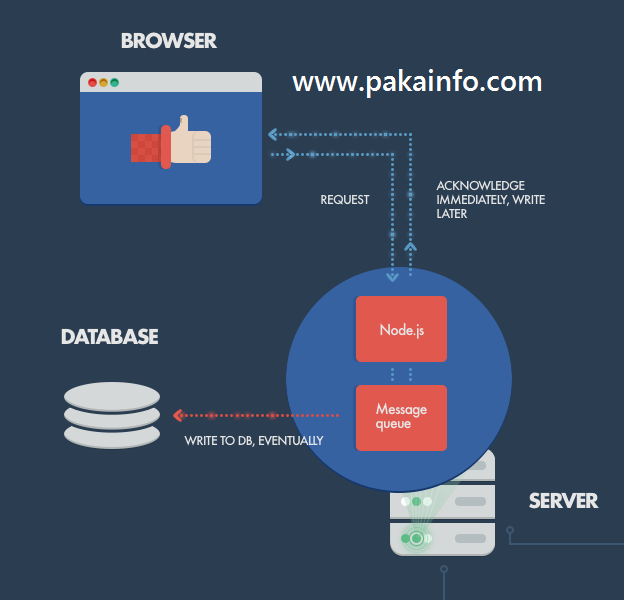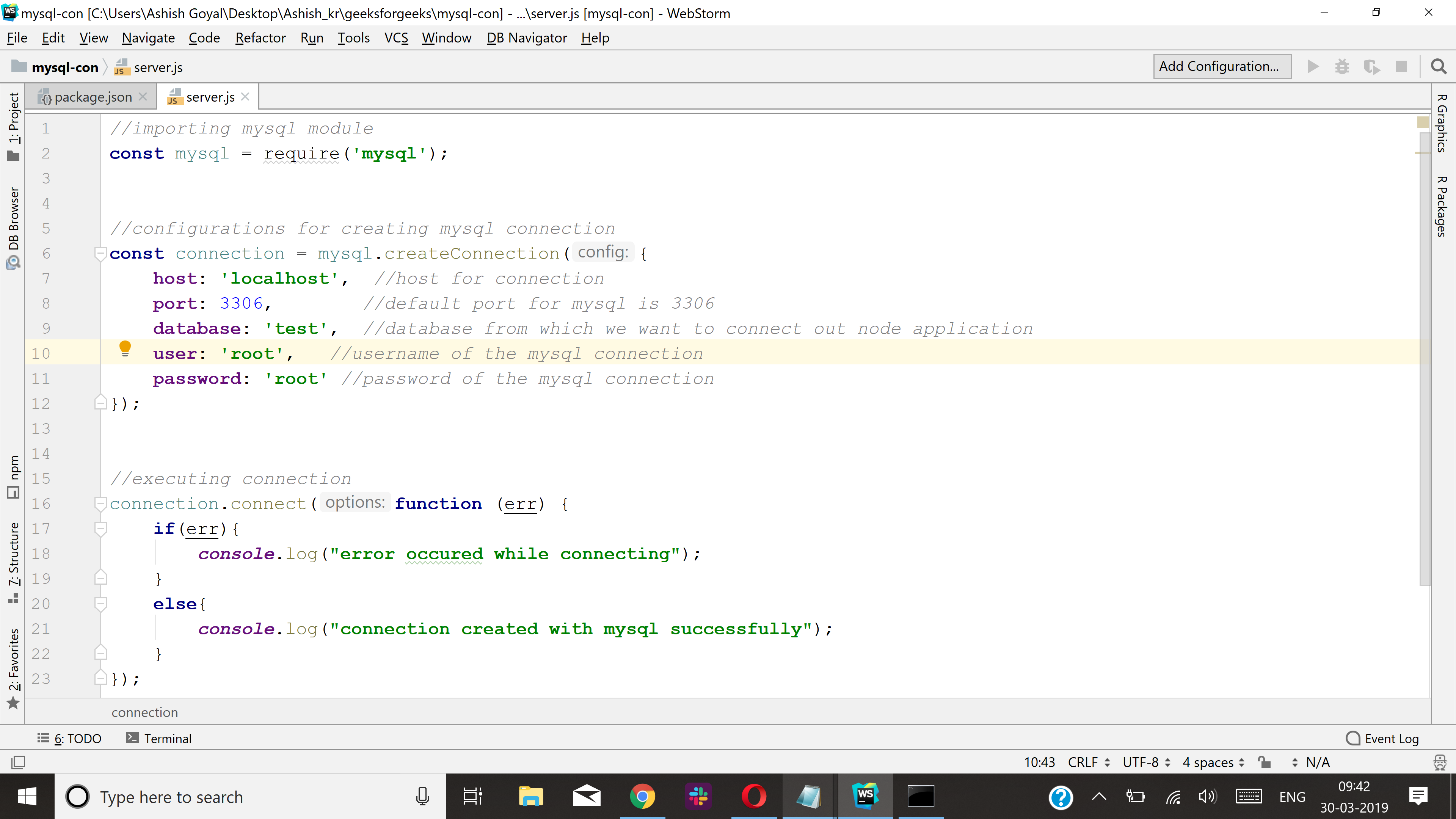

So let’s go ahead and explore what each snippet of code does in this file. Since our main goal is to understand the connection between Node.js and MySQL database, this will be the only file that we create and work on in this project. We are working only on a single file called index.js, so the project directory is very simple.Ĭreate a file called index.js in the project directory. Let’s first take a look at how the project directory should look at the end of this tutorial. Learn to build network applications quickly and efficiently using JavaScript with the Node.js Training. We will be able to create, update, and delete employees in the database. The code that we’re writing now will allow us to create the employee database. We are going to connect the Node.js web server with the MySQL database to store the employee details. Press Enter to leave the default settings as they are. Open the newly created directory in VS Code inside the terminal, and type npm init to initialize the project.Create an empty folder and name it node.js mysql.To download the application, go to its official website.
Nodejs mysql install#
Then, open the installer to install MySQL on your system, keeping the default settings.įor this tutorial, we are using the Postman application to work with the API requests in our code. Similar to Node.js installation, you can download the MongoDB Community Server from its official website.

We are using Visual Studio Code in this tutorial, but you can also use other editors-like Atom and Sublime Text-if you are more comfortable with them.įig: Visual Studio Code download page MySQL Installation Verify whether it is installed or not with the following command in CMD: npm -version NPM includes many libraries that are used in web applications such as React. When we install Node.js, we gain access to NPM (Node Package Manager). Verify that Node.js was properly installed by opening the command prompt and typing this command: node -versionĤ. The installer will install Node.js and prompt you to click on the finish button.ģ. You can leave the other settings in default mode.

Run the Node.js installer and accept the license agreement. Select the installer that is compatible with your operating system and environment.Ģ. You can use it for any of your projects.How to Create and Manage an Employee Database Prerequisites Node.js Installationġ.

So we have created the mysql database using Node.js. `) Ĭreate route to create database and use itĪpp.get("/createDatabase", (req, res) => Database`)
Nodejs mysql how to#
We are going to explain how to create and use a MySQL database in Node.js, with the help of the Create Database query. This will be very useful for Node.js developers.Ĭreate Database Query: CREATE DATABASE gfg_db Ĭreate and export mysql connection objectĬonsole.log("Database Connection Failed !!!", err) Ĭonst database = require('./sqlConnection') Ĭonsole.log(`Server is up and running on 5000. It is a system that works to handle any type of information, from a simple shopping list to complex files of a large company.Ĭreating a MySQL database with Node.js framework MySQL, on the other hand, is a database management system, as simple as that. On every connection, the callback is triggered, but if there is no work to do, Node.js will sleep.” In the following "hello world" example, many connections can be handled at the same time. On their official page they point out “As an event-driven asynchronous JavaScript runtime, Node.js is designed to create scalable network applications. In this blog, we are going to learn how to use MySQL with Node.js framework.įirst, we must define what Node.js is and no one better explains how this technology works than its creators.
Nodejs mysql software#
A database is essential for any software project, be it a mobile application or a website, so developers use various technologies to create them there, among them MySQL.


 0 kommentar(er)
0 kommentar(er)
